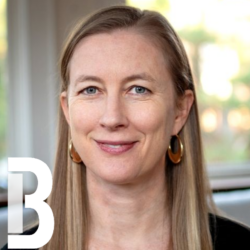Sleepers: privacy in public places
As a social scientist I find it interesting to seek out topics for study that no-one else seems to have looked at, yet which do throw light on what it means to be human. One such topic, on which I have yet to find any authorities, is how people sleep in public places.
When we are asleep we are at our most vulnerable. Our bedrooms are our most private and personal places into which only our intimates are allowed. Those who move from one fixed abode to another, such as students or holiday travellers, will regard where they lay their head as the crucial, fixed point of their day. For itinerants and those who live on the street the place where they sleep is their home. It is therefore rare to see even people we know very well asleep. With all the deluge of photographs we have of the celebrated and famous how often do you see pictures of them asleep? I suppose the reason for this, besides its intrusion into their privacy, is that it is seen as inanimate and lacking interest. But watching and photographing people asleep in public places, as I have around the world, shows that it tells us a lot about them and the society in which they live.
The mystery of sleep draws us into a state of being in which we are at our most authentic. When we are in the territory of Hypnos we can only be who we are and not who we wish to depict ourselves as being. Rare glimpses of people sleeping show them at that curious place where they are giving in to the most natural of animal needs, but also reveal their human character. People asleep in public places are thus a fascinating topic for exploration. They allow us to examine a profoundly human paradox. The essence of the person is presented when they are doing the least to portray themselves. We can study people at their most defenceless in order to see what defences they have.
 Perhaps the clearest example of what is revealed by a person asleep is this Big Issue seller on the on the steps in front of Oxford Road Railway Station in Manchester. These busy steps are a good location for him to ply his trade. He is on show to the world here so perhaps has gone to sleep there without fear or concern. He has not felt the need to crawl away somewhere else and hide asleep. He shows how private we can all be, how totally isolated a place we can find for ourselves even in the most public of places.
Perhaps the clearest example of what is revealed by a person asleep is this Big Issue seller on the on the steps in front of Oxford Road Railway Station in Manchester. These busy steps are a good location for him to ply his trade. He is on show to the world here so perhaps has gone to sleep there without fear or concern. He has not felt the need to crawl away somewhere else and hide asleep. He shows how private we can all be, how totally isolated a place we can find for ourselves even in the most public of places.
From a researcher’s point of view he even has the kindness to leave the empty whisky bottle next to him, as if he collapsed after the last drop. The uncomfortable position, where he may be tripped over by people running for a train, shows that he is not choosing sleep, it is choosing him. If ever there was an indication of how homeless people create private locations in public, this is it. People keep their distance from him not wishing to disturb him in his solitude.
 This homeless person in central London shows how differently people, even in the most destitute situations, can impose their own character on their need for undisturbed sleep. The concrete slab with it small windows defines a territory whilst possibly giving a little warmth from the room below. But he (or just possibly she) has used everything he can get hold of to cut himself off from the world around.
This homeless person in central London shows how differently people, even in the most destitute situations, can impose their own character on their need for undisturbed sleep. The concrete slab with it small windows defines a territory whilst possibly giving a little warmth from the room below. But he (or just possibly she) has used everything he can get hold of to cut himself off from the world around.
I did do a very large study for the Salvation Army many years ago counting and trying to understand people sleeping rough on the streets of London. What became clear was that there was a small sub-group who were really able to create their own distinct corner of the world in these public places. Happily that work together with other studies revealed that the numbers sleeping out in London were not the thousands, that had been thought, and so it was possible to find alternatives for them and they are a much rarer sight now.
The acceptance of people asleep in public reveals interesting cultural differences as well. So I will just consider one more example; this time in India, Fort Kochi, Kerala.
 Here the stall holder is having a well-earned siesta. He has spread his mat in the shade behind his stall and carefully put his sandals down as he would if he were entering his house. The detritus in the rest of the area is of no concern to him because he just turns away from it. If anything it provides something of a cordon to keep others from getting too close and disturbing his sleep.
Here the stall holder is having a well-earned siesta. He has spread his mat in the shade behind his stall and carefully put his sandals down as he would if he were entering his house. The detritus in the rest of the area is of no concern to him because he just turns away from it. If anything it provides something of a cordon to keep others from getting too close and disturbing his sleep.
Of course there are risks for all these street sleepers. They are vulnerable to attack, but they know that is less likely if there are the eyes of others around them. They thus illustrate an implicit knowledge of how society works and the findings that criminologists have striven for to show that what Jane Jacobs in her seminal book The Death and Life of Great American Cities called ‘the eyes on the street’.
I hope these rather casual observations encourage others to look again at how public places are used for private purposes.





















































































